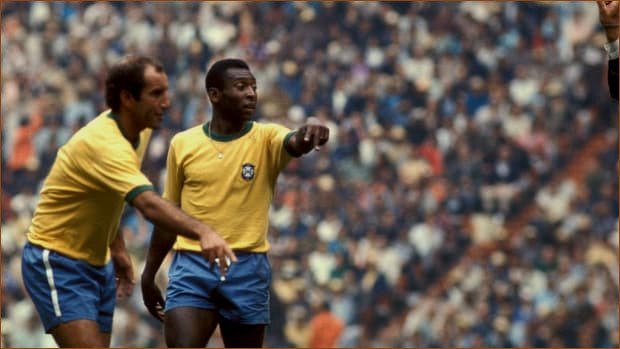“Somebody once said that football’s a matter of life and death. I replied, ‘Listen, it’s far more significant than that.’” This iconic assertion from Liverpool’s iconic Bill Shankly encapsulates the profound grip that soccer—whether termed football, calcio, or simply the beautiful game—holds over countless lives across the globe. With a staggering 3.5 billion enthusiasts, the quest to unravel the origins and pioneers of this passion takes us on a riveting journey through time.
Ancient Echoes
Long before the modern game took shape, history’s whispers revealed a world where people delighted in kicking around balls. FIFA points to cuju—an antiquated Chinese sport from the 3rd to 2nd century BC—as the earliest iteration. Employing a feather-stuffed ball, the objective was deceptively simple: keep it airborne and maneuver it through a hoop.
Picture this: Manchester City’s Bernardo Silva channeling his inner cuju skills to commemorate the Lunar New Year with delightful flair. However, cuju was not the only early contender. Episkyros, a Greek pastime, showcased a rougher edge where two teams, armed with feet and hands, clashed to advance a ball past each other’s boundary. Bloodied yet exhilarating—Spartan warriors undoubtedly relished the contact, foreshadowing the birth of rugby and American football.
As the Romans seized the ball and transformed the sport into Harpastum, the brutality intensified, further foreshadowing the physicality witnessed in today’s games.
Medieval Mayhem
Not to be outdone, the Middle Ages brought a new flavor of havoc. Picture two valiant teams, of limitless size, wrestling to dominate a prized inflated pig’s bladder. Tactics? Almost anything went, as long as mortal consequences were avoided. Strikingly, this chaotic pursuit survives; every Shrove Tuesday and Ash Wednesday, the English town of Ashbourne hosts an annual Royal Shrovetide match—legend says it once commenced with a severed head, following a public execution. A bizarre mix of tradition and tenacity!
The Dawn of Modern Soccer
Fast forward to the 19th century when the British, ever the rule-makers, concocted regulations regarding every conceivable facet of life. Soccer too found itself enveloped in newfound structure, thanks to some intellectuals at Cambridge University who established the Cambridge Rules in 1848. Their mandate? A clear emphasis on foot maneuvers, decisively delineating soccer from rugby.
No singular genius can be crowned the father of this sport, yet Ebenezer Morley emerges as a notable contender, credited with founding the English Football Association and drafting the 13 original laws of the game in a humble London pub on October 26, 1863. Today, we still adhere to the “Laws of the Game,” albeit with modern tweaks, the swirling chants of ‘Football’s coming home’ echoing through the terraces, oftentimes just before uplands of disappointment set in during tournaments.
Soccer’s Global Supremacy
The British Empire, through its expansive reach, facilitated the global dispersal of soccer. Through the lens of ‘muscular Christianity,’ a Victorian ideal intertwining moral and physical discipline, schools taught the burgeoning game, which then spread amongst soldiers, sailors, and rail workers. Its uncomplicated nature—requiring little more than a ball and an open field—fostered its rapid embrace worldwide.
In 1904, FIFA arose as the sport’s governing body, unifying nations under a cohesive framework. The inaugural World Cup in 1930 unfolded in Uruguay, boasting just 13 nations—a stark contrast to the anticipated record of 48 participating nations in the upcoming iterations hosted by the USA, Canada, and Mexico in 2026. Detractors critique FIFA’s move to expand the tournament, fearing it sows dilution, yet President Gianni Infantino contends it almost serves a higher purpose: broadening soccer’s horizon and democratizing the dream of victory, with 135 FIFA members now sensing the pulse of possibility.

